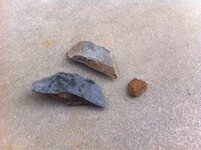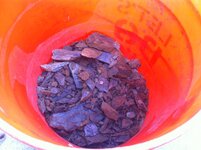H&F909ORO
Sr. Member
Hi All,
I tried out crevicing last time I was up at the Mother Lode and got good results. I had no idea what I was doing besides digging the dirt out with a pick, then panning it out. That's as much as I know. Do you guys have any tips for me? Going up again soon, and I wanted to know if someone could answer my question. When getting the dirt out of the crevices do you want to go deep into the bedrocks crevice to get better gold? Or just get the surface dirt and wait for it to fill up again. I'm talking about small crevices not huge ones the you could fit a shovel in. Any answers and tips would be greatly appreciated.
Thanks,
H&F
I tried out crevicing last time I was up at the Mother Lode and got good results. I had no idea what I was doing besides digging the dirt out with a pick, then panning it out. That's as much as I know. Do you guys have any tips for me? Going up again soon, and I wanted to know if someone could answer my question. When getting the dirt out of the crevices do you want to go deep into the bedrocks crevice to get better gold? Or just get the surface dirt and wait for it to fill up again. I'm talking about small crevices not huge ones the you could fit a shovel in. Any answers and tips would be greatly appreciated.
Thanks,
H&F
Amazon Forum Fav 👍
Upvote
0







